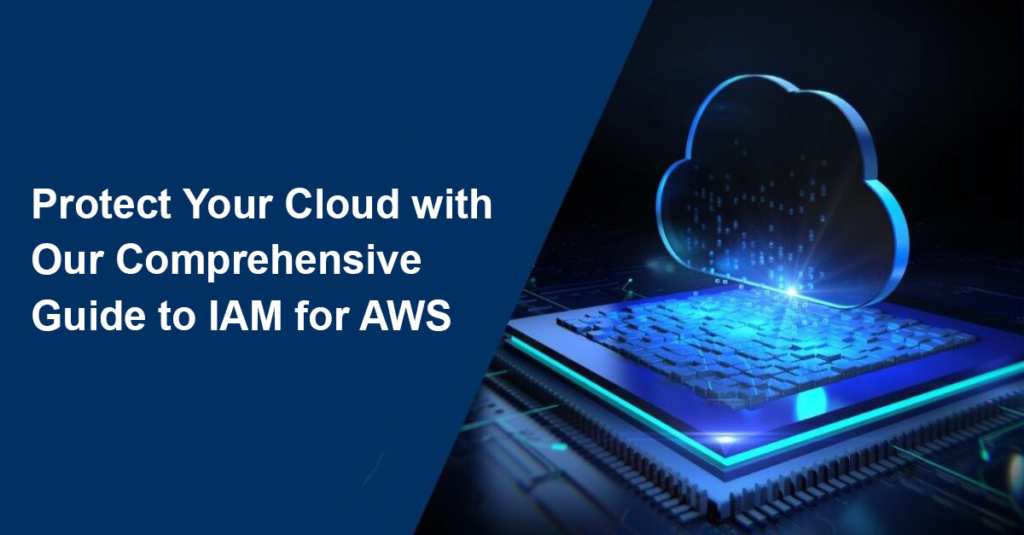As more companies move their data and applications to the cloud, security concerns have become increasingly important. One of the key components of cloud security is Identity and Access Management (IAM), which ensures that only authorised users have access to resources in the cloud.
Amazon Web Services (AWS) is one of the most popular cloud providers, offering a wide range of services for businesses of all sizes. However, with so many different AWS services and configurations available, it can be challenging to secure your AWS environment properly. IAM in Google Cloud Platform helps you protect your cloud resources by granting granular access to users and services. This comprehensive guide will provide you with everything you need to know about IAM for AWS so that you can protect your sensitive information from unauthorised access or theft.
Explaining the importance of IAM for AWS
1. IAM (Identity and Access Management) is a crucial tool for managing user access to AWS resources. It allows you to control who can access what, and when. With IAM, you can grant different levels of permission to users based on their roles or responsibilities. This helps ensure that only authorised personnel can make changes or view sensitive data.
2. Another benefit of using IAM for AWS is the ability to track user activity. IAM logs all actions taken by each user, so you always know who did what and when. This audit trail is important for compliance purposes and can also help with troubleshooting if something goes wrong.
3. Lastly, if your organisation has multiple AWS accounts or services, IAM makes it easy to manage everything in one place. You can create centralised policies that apply across all accounts or customise permissions for specific services as needed.
Overall, IAM is an essential component of any AWS deployment. It provides granular control over who has access to your resources, improves security by tracking user activity, and simplifies management across multiple accounts or services.
Understanding IAM: Basic concepts and terminology

IAM stands for Identity and Access Management, which refers to the process of managing user identities and their access rights to resources or services in a system. Basic concepts in IAM include users, groups, roles, policies, permissions, and authentication. Users are individuals or entities who require access to resources or services in a system. Cloud-based contact management can help you protect your cloud by providing a secure and centralized place to store your contact information. Groups are collections of users that share common attributes such as job functions or project roles. Roles are sets of permissions that define what actions a user can perform on specific resources.
Read: Role of Quantum Computing in AI ML Development Advancements
Policies are sets of rules that determine which users have access to certain resources or services based on their roles and permissions. Permissions specify the level of access granted to users based on their role assignments within the system. Finally, authentication is the process of verifying user identity using credentials such as passwords, tokens or biometrics.
Understanding these basic concepts and terminology is key to creating an effective IAM strategy for AWS cloud environments that ensures secure resource sharing while maintaining compliance with organisational policies and regulations. By implementing IAM best practices such as least privilege access control and multi-factor authentication (MFA), organisations can minimise security risks associated with cloud computing while maximising efficiency through streamlined user management processes.
IAM in AWS: How it works and its benefits
IAM (Identity and Access Management) is a service offered by Amazon Web Services (AWS) that allows businesses to manage user access to AWS resources securely. IAM in AWS works by creating identities for users, groups, and applications that need to access the AWS resources. The service then assigns permissions to these identities based on policies defined by the administrators.
One of the key benefits of using IAM in AWS is that it helps businesses ensure their cloud infrastructure remains secure by limiting access only to authorised users or applications. This reduces the risk of data breaches or unauthorised changes being made to critical systems. Additionally, IAM provides detailed audit logs and reporting capabilities so administrators can monitor user activity and ensure compliance with policies.
Overall, implementing IAM in an AWS environment is essential for any organisation looking to leverage cloud computing securely while maintaining control over their IT resources. With its robust authentication and authorization capabilities, businesses can effectively manage user access across a wide range of services within their cloud infrastructure.
Best practices for IAM: Tips to secure your cloud
One of the most critical steps towards securing your cloud is implementing identity and access management (IAM) best practices. Protecting your cloud infrastructure is critical to ensuring the security, reliability, and compliance of your cloud-based applications and data. This includes ensuring that users have appropriate levels of access to resources and regularly reviewing those permissions to ensure they remain necessary and relevant. Additionally, enabling multi-factor authentication (MFA) can add an extra layer of security by requiring users to provide additional verification before accessing sensitive data or systems.
Another essential step in IAM best practices is enforcing strong password policies. This means requiring complex passwords with a combination of letters, numbers, and symbols, as well as regularly prompting users to change their passwords. It’s crucial to educate employees on the importance of strong passwords and how they can protect against potential cyberattacks.
Finally, it’s important to monitor user activity within your cloud environment carefully. By tracking who accessed what data or systems when, you can quickly identify any suspicious behaviour or potential security threats. Regularly reviewing logs for unusual activity patterns can help you detect and respond proactively before any significant damage occurs.
Conclusion: Emphasising the significance of protecting cloud data
In conclusion, protecting cloud data is crucial in today’s digital era where data breaches and cyber-attacks are becoming more frequent. A single security breach can result in the loss of sensitive information, reputational damage, legal ramifications, and financial losses for both individuals and organisations. It is therefore essential to take proactive measures to safeguard your cloud data.
Implementing robust Identity and Access Management (IAM) protocols is one of the most effective ways to protect your cloud data. IAM enables you to control who accesses your cloud resources, what actions they can perform, and under what conditions. By implementing IAM best practices such as multi-factor authentication (MFA), least privilege access control, and regular monitoring or auditing of access logs, you can minimise security risks associated with unauthorised access or use of your cloud resources.
In conclusion, protecting cloud data using IAM requires a comprehensive approach that covers all aspects including people, processes, technology tools and infrastructure. Organisations must invest in training their employees on security awareness best practices; create policies that outline procedures for handling sensitive information; deploy robust security technologies such as firewalls or intrusion detection systems (IDS); conduct regular vulnerability assessments; and monitor their networks for potential threats. With these critical measures in place organisations can safeguard against unauthorised access or use of their valuable cloud resources while ensuring business continuity through successful digital transformation initiatives.
